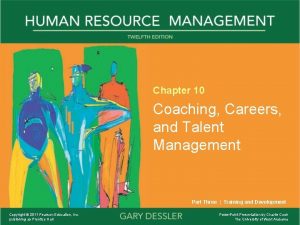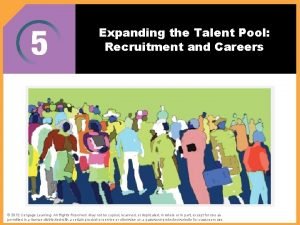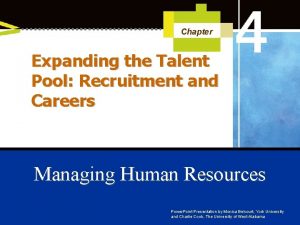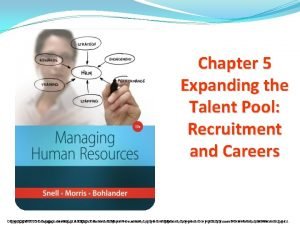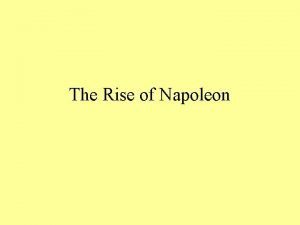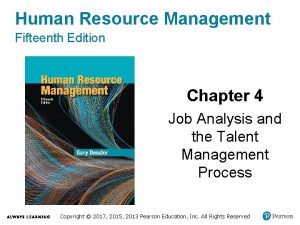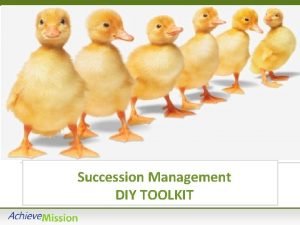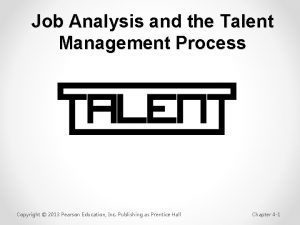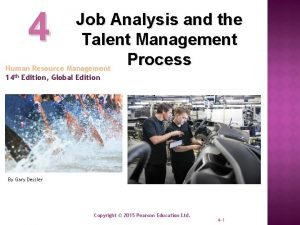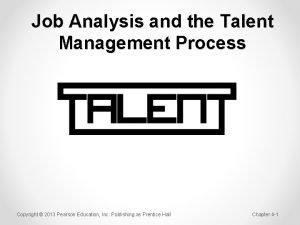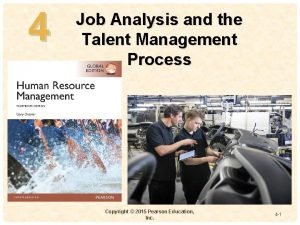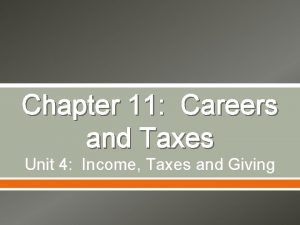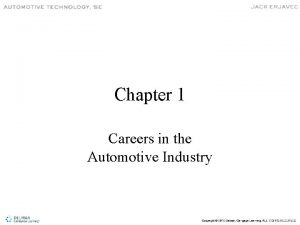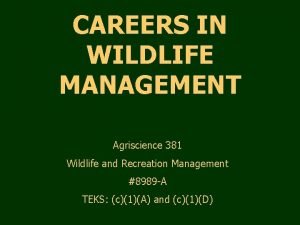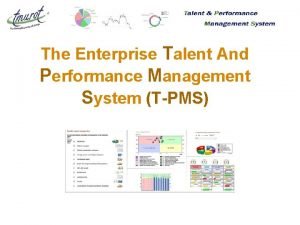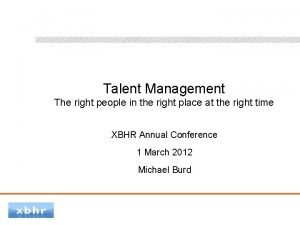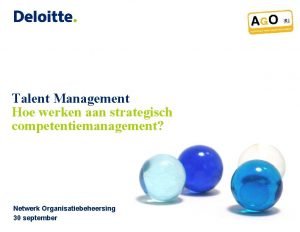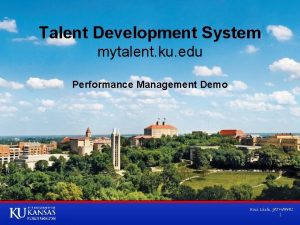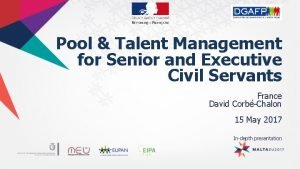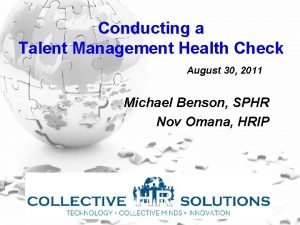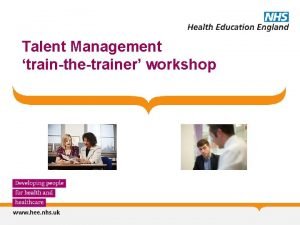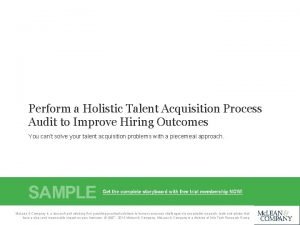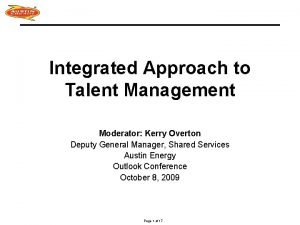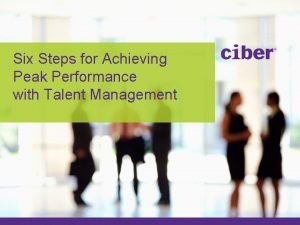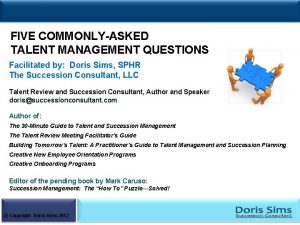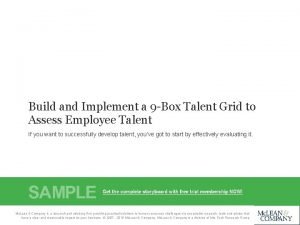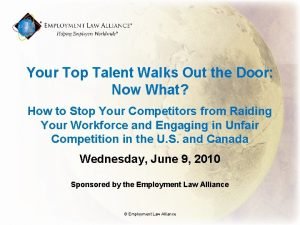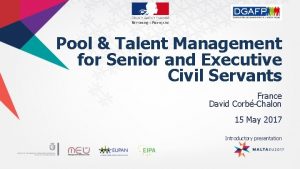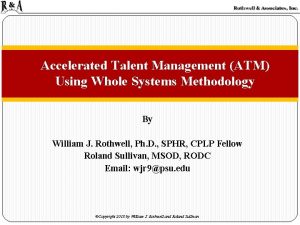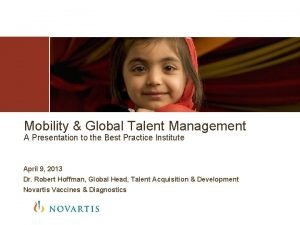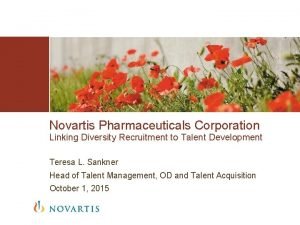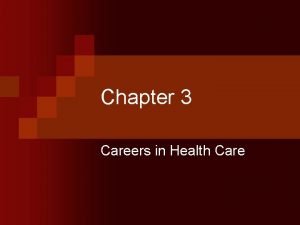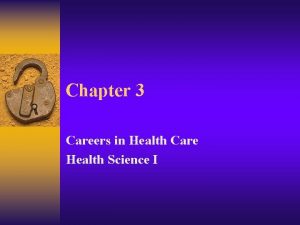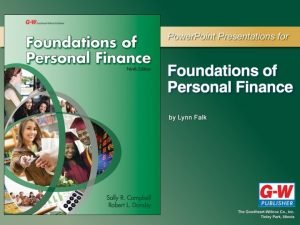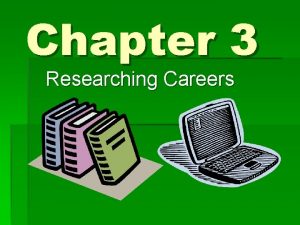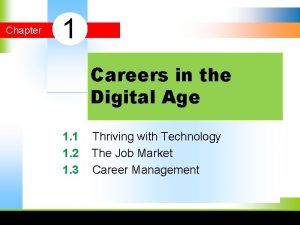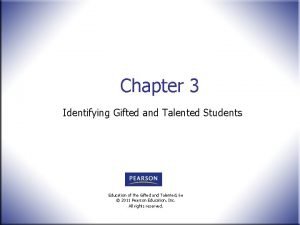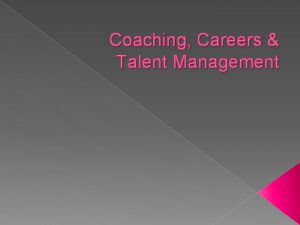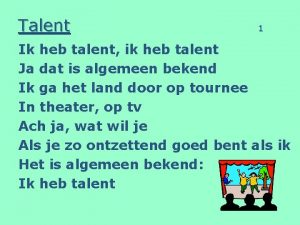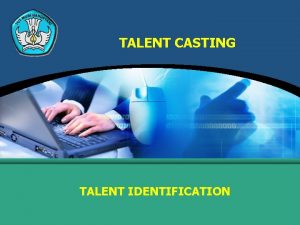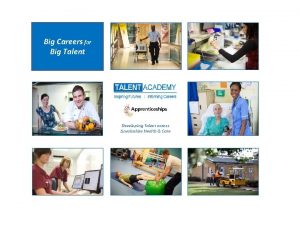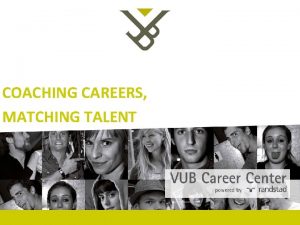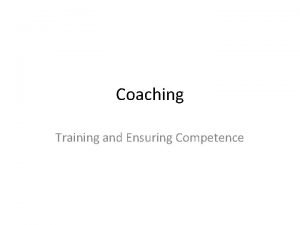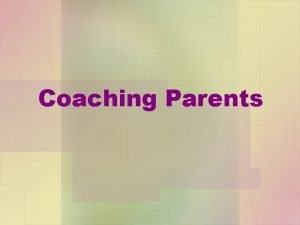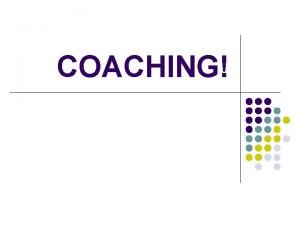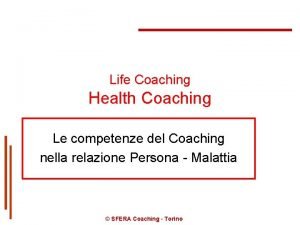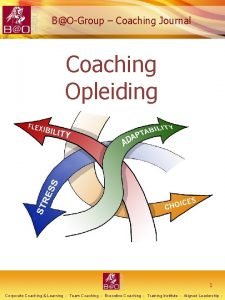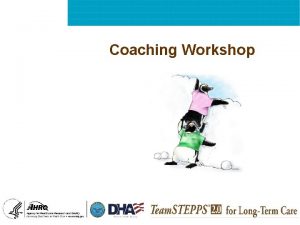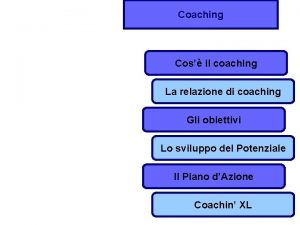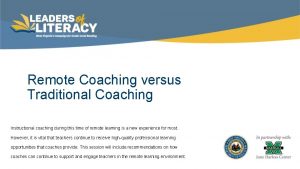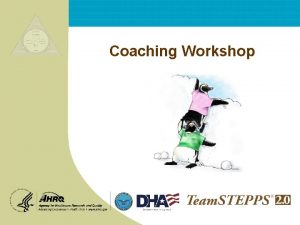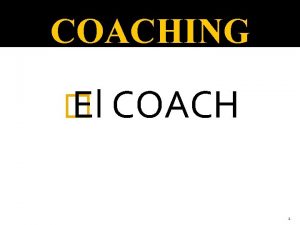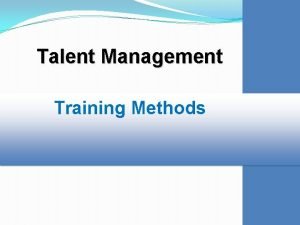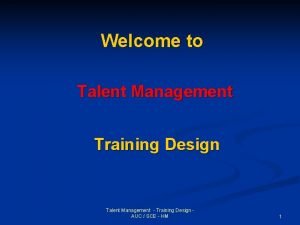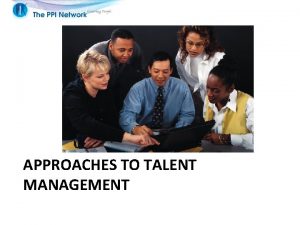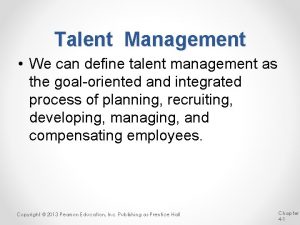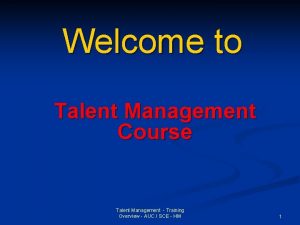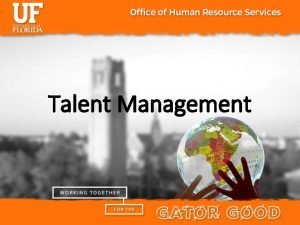Chapter 10 Coaching Careers and Talent Management Part















































- Slides: 47

Chapter 10 Coaching, Careers, and Talent Management Part Three | Training and Development Copyright © 2011 Pearson Education, Inc. publishing as Prentice Hall Power. Point Presentation by Charlie Cook The University of West Alabama

WHERE WE ARE NOW… Copyright © 2011 Pearson Education, Inc. publishing as Prentice Hall 10– 2

LEARNING OUTCOMES 1. Compare and contrast coaching and mentoring and describe the importance of each. 2. Compare employers’ traditional and career planningoriented HR focuses. 3. Explain the employee’s, manager’s, and employer’s career development roles. 4. Describe the issues to consider when making promotion decisions. 5. List and briefly explain at least four methods for better managing retirements. 6. Define talent management and give an example of an actual talent management system. Copyright © 2011 Pearson Education, Inc. publishing as Prentice Hall 10– 3

Coaching and Mentoring • Coaching Ø Involves educating, instructing, and training subordinates Ø Focuses on teaching shorter-term job-related skills • Mentoring Ø Is actively advising, counseling, and guiding Ø Is helping employees navigate longer-term career hazards Ø Is leading highly trained employees and self-managing teams Ø Supplants the need for authority and for giving orders for getting things done • Coaching and mentoring require both analytical and interpersonal skills. Copyright © 2011 Pearson Education, Inc. publishing as Prentice Hall 10– 4

Improving Your Coaching Skills The Four-Step Coaching Process 1 Preparing to coach 2 Developing a mutually agreed change plan 3 Engaging in active coaching 4 Evaluating for feedback and follow-up Copyright © 2011 Pearson Education, Inc. publishing as Prentice Hall 10– 5

Preparing to Coach: Applying the ABC Approach • Antecedents Ø What things must come before the person does the job? • Behavior Ø Can the person do the job if he or she wanted to? • Consequences Ø What are the consequences of doing the job right? Copyright © 2011 Pearson Education, Inc. publishing as Prentice Hall 10– 6

FIGURE 10– 1 A Short Course in Improving Interpersonal Communications Copyright © 2011 Pearson Education, Inc. publishing as Prentice Hall 10– 7

FIGURE 10– 2 Coach’s Self-Evaluation Checklist Copyright © 2011 Pearson Education, Inc. publishing as Prentice Hall 10– 8

The Basics Of Career Management Career Terminology Career Development Career Planning Copyright © 2011 Pearson Education, Inc. publishing as Prentice Hall 10– 9

Careers Today and Employee Commitment Old Contract (Employer-focused) New Contract (Employee-focused) “Do your best and be loyal to us, and we’ll take care of your career. ” “I’ll do my best for you, but I expect you to provide the development and learning that will prepare me for the day I must move on, and for having the work-life balance that I desire. ” Copyright © 2011 Pearson Education, Inc. publishing as Prentice Hall 10– 10

TABLE 10– 1 Traditional Versus Career Development Focus HR Activity Traditional Focus Career Development Focus Human resource planning Analyzes jobs, skills, tasks— present and future. Projects needs. Uses statistical data. Adds information about individual interests, preferences, and the like to replacement plans. Recruiting and placement Matching organization’s needs with qualified individuals. Matches individuals and jobs based on variables including employees’ career interests and aptitudes. Training and development Provides opportunities for learning skills, information, and attitudes related to job. Provides career path information. Adds individual development plans. Performance appraisal Rating and/or rewards. Adds development plans and individual goal setting. Compensation and benefits Rewards for time, productivity, talent, and so on. Adds tuition reimbursement plans, compensation for non–job-related activities such as United Way. Copyright © 2011 Pearson Education, Inc. publishing as Prentice Hall 10– 11

FIGURE 10– 3 Employee Career Development Plan Copyright © 2011 Pearson Education, Inc. publishing as Prentice Hall 10– 12

Why Offer Career Development? Better equips employees to serve the firm Career Development Benefits Boosts employee commitment to the firm Supports recruitment and retention of efforts Copyright © 2011 Pearson Education, Inc. publishing as Prentice Hall 10– 13

TABLE 10– 2 Roles in Career Development Individual Manager • • Provide timely and accurate performance feedback. • Provide developmental assignments and support. • Participate in career development discussions with subordinates. • Support employee development plans. Accept responsibility for your own career. Assess your interests, skills, and values. Seek out career information and resources. Establish goals and career plans. Utilize development opportunities. Talk with your manager about your career. Follow through on realistic career plans. Employer • • Communicate mission, policies, and procedures. Provide training and development opportunities, including workshops. Provide career information and career programs. Offer a variety of career paths. Provide career-oriented performance feedback. Provide mentoring opportunities to support growth and self-direction. Provide employees with individual development plans. Provide academic learning assistance programs. Copyright © 2011 Pearson Education, Inc. publishing as Prentice Hall 10– 14

TABLE 10– 3 Possible Employer Career Planning and Development Practices Job postings Career booklets/pamphlets Formal education/tuition reimbursement Written individual career plans Performance appraisal for career planning Counseling by manager Lateral moves/job rotations Counseling by HR Preretirement programs Succession planning Formal mentoring Common career paths Dual ladder career paths Copyright © 2011 Pearson Education, Inc. publishing as Prentice Hall Career workshops Assessment center Upward appraisal Appraisal committees Training programs for managers Orientation/induction programs Special needs (highfliers) Special needs (dual-career couples) Diversity management Expatriation/repatriation 10– 15

FIGURE 10– 4 Sample Agenda— Two-Day Career Planning Workshop Copyright © 2011 Pearson Education, Inc. publishing as Prentice Hall 10– 16

Innovative Corporate Career Development Initiatives 1. Provide individual lifelong learning budgets. 2. Encourage role reversal. 3. Help organize “career success teams. ” 4. Provide career coaches. 5. Offer online career development programs. Copyright © 2011 Pearson Education, Inc. publishing as Prentice Hall 10– 17

Commitment-Oriented Career Development Efforts • Change in Employee Commitment Ø Globalization raising productivity and efficiency requirements Ø Employees thinking of selves as free agents • Career-oriented Appraisals Ø Provide an opportunity to discuss and link the employee’s performance, career interests, and developmental needs into a coherent career plan. Copyright © 2011 Pearson Education, Inc. publishing as Prentice Hall 10– 18

FIGURE 10– 5 Sample Performance Review Development Plan Copyright © 2011 Pearson Education, Inc. publishing as Prentice Hall 10– 19

Establishing an Effective Mentoring Program • • • Require mentoring? Provide mentoring training? Does distance matter? Same or different departments? Big or small difference in rank? Copyright © 2011 Pearson Education, Inc. publishing as Prentice Hall 10– 20

Characteristics of Effective Mentors • Are professionally competent • Are trustworthy • Are consistent • Have the ability to communicate • Are willing to share control • Set high standards • Are willing to invest time and effort • Actively steer protégés into important work Copyright © 2011 Pearson Education, Inc. publishing as Prentice Hall 10– 21

Choosing a Mentor • Choose an appropriate potential mentor. • Don’t be surprised if you’re turned down. • Be sure that the mentor understands what you expect in terms of time and advice. • Have an agenda. • Respect the mentor’s time. Copyright © 2011 Pearson Education, Inc. publishing as Prentice Hall 10– 22

Enhancing Diversity Through Career Management • Sources of Bias and Discrimination Ø A lack of diversity in the hiring department Ø The “old-boy network” of informal friendships Ø A lack of women mentors Ø A lack of high-visibility assignments and developmental experiences (glass ceiling) Ø A lack of company role models for members of the same racial or ethnic group Ø Inflexible organizations and career tracks Copyright © 2011 Pearson Education, Inc. publishing as Prentice Hall 10– 23

Taking Steps to Enhance Diversity: Women’s and Minorities’ Prospects Eliminate institutional barriers Improve networking and mentoring Supporting Diversity Abolish the glass ceiling Adopt flexible career tracks Copyright © 2011 Pearson Education, Inc. publishing as Prentice Hall 10– 24

Employer Life-Cycle Career Management Making Promotion and Transfer Decisions Decision 1: Is Seniority or Competence the Rule? Decision 2: How Should We Measure Competence? Copyright © 2011 Pearson Education, Inc. publishing as Prentice Hall Decision 3: Is the Process Formal or Informal? Decision 4: Vertical, Horizontal, or Other? 10– 25

Managing Transfers • Employees’ reasons for desiring transfers Ø Personal enrichment and growth Ø More interesting jobs Ø Greater convenience (better hours, location) Ø Greater advancement possibilities • Employers’ reasons for transferring employees Ø To vacate a position where an employee is no longer needed Ø To fill a position where an employee is needed Ø To find a better fit for an employee within the firm Ø To boost productivity by consolidating positions Copyright © 2011 Pearson Education, Inc. publishing as Prentice Hall 10– 26

Attracting and Retaining Older Workers Create a culture that honors experience Modify selection procedures HR Policies for Older Workers Offer flexible or part-time work Implement phased retirement programs Copyright © 2011 Pearson Education, Inc. publishing as Prentice Hall 10– 27

Managing Retirements • Preretirement Counseling Practices Ø Explanation of Social Security benefits Ø Leisure time counseling Ø Financial and investment counseling Ø Health counseling Ø Psychological counseling Ø Counseling for second careers inside the company Copyright © 2011 Pearson Education, Inc. publishing as Prentice Hall 10– 28

Talent Management • Talent Management Ø Is the automated end-to-end process of planning, recruiting, developing, managing, and compensating employees throughout the organization Ø Requires coordinating several human resource activities, in particular workforce acquisition, assessment, development, and retention Ø Is career management from the employer’s point of view Copyright © 2011 Pearson Education, Inc. publishing as Prentice Hall 10– 29

FIGURE 10– 6 The Talent Management Process Copyright © 2011 Pearson Education, Inc. publishing as Prentice Hall 10– 30

KEY TERMS coaching career cycle mentoring growth stage career exploration stage career management establishment stage career development trial substage career planning stabilization substage reality shock midcareer crisis substage promotions maintenance stage transfers decline stage talent management career anchors Copyright © 2011 Pearson Education, Inc. publishing as Prentice Hall 10– 31

Chapter 10 Appendix Copyright © 2011 Pearson Education, Inc. publishing as Prentice Hall 10– 32

Identify Your Career Stage • Growth Stage • Exploration Stage • Establishment Stage Ø Trial substage Ø Stabilization substage Ø Midcareer crisis substage • Maintenance Stage • Decline Stage Copyright © 2011 Pearson Education, Inc. publishing as Prentice Hall 10– 33

FIGURE 10–A 1 Choosing an Occupational Orientation Copyright © 2011 Pearson Education, Inc. publishing as Prentice Hall 10– 34

TABLE 10–A 1 Example of Some Occupations That May Typify Each Occupational Theme Realistic Investigative Artistic Social Enterprising Conventional Engineers Physicians Psychologists Auto sales dealers Public relations executives School administrators A wide range of managerial occupations, including: Accountants Carpenters Advertising executives Research and development managers Military officers Bankers Credit managers Chamber of commerce executives Investment managers Lawyers Copyright © 2011 Pearson Education, Inc. publishing as Prentice Hall 10– 35

FIGURE 10–A 2 Finding the Job You Should Want (Part 1) Copyright © 2011 Pearson Education, Inc. publishing as Prentice Hall 10– 36

FIGURE 10–A 3 Finding the Job You Should Want (Part 2) Copyright © 2011 Pearson Education, Inc. publishing as Prentice Hall 10– 37

FIGURE 10–A 4 Finding the Job You Should Want (Part 3) Copyright © 2011 Pearson Education, Inc. publishing as Prentice Hall 10– 38

Identify Your Career Anchors Technical/functional competence Security Autonomy and independence Copyright © 2011 Pearson Education, Inc. publishing as Prentice Hall Managerial competence Creativity 10– 39

FIGURE 10–A 5 Occupational Outlook Handbook Online Copyright © 2011 Pearson Education, Inc. publishing as Prentice Hall 10– 40

FIGURE 10–A 6 Some Online Sources of Occupational Information Copyright © 2011 Pearson Education, Inc. publishing as Prentice Hall 10– 41

Job Search Techniques • Do your own local research • Online job boards • Personal contacts • Answering advertisements • Employment agencies • Executive recruiters • Career counselors • Executive marketing consultants • Employers’ Web sites Copyright © 2011 Pearson Education, Inc. publishing as Prentice Hall 10– 42

Writing Your Résumé • Introductory information • Job objective • Job scope • Your accomplishments • Length • Personal data • Make your résumé scannable Copyright © 2011 Pearson Education, Inc. publishing as Prentice Hall 10– 43

FIGURE 10–A 7 Partial Example of a Good Résumé Copyright © 2011 Pearson Education, Inc. publishing as Prentice Hall 10– 44

Online Bios • Fill it with details • Avoid touchy subjects • Look the part • Make it search friendly • Use abbreviations • Say it with numbers • Carefully proofread Copyright © 2011 Pearson Education, Inc. publishing as Prentice Hall 10– 45

Handling the Interview • Prepare, prepare • Uncover the interviewer’s needs • Relate yourself to the person’s needs • Think before answering • Make a good appearance and show enthusiasm Copyright © 2011 Pearson Education, Inc. publishing as Prentice Hall 10– 46

All rights reserved. No part of this publication may be reproduced, stored in a retrieval system, or transmitted, in any form or by any means, electronic, mechanical, photocopying, recording, or otherwise, without the prior written permission of the publisher. Printed in the United States of America. Copyright © 2011 Pearson Education, Inc. publishing as Prentice Hall 10– 47
 Coaching careers and talent management
Coaching careers and talent management Identify a warning sign of a weak talent bench.
Identify a warning sign of a weak talent bench. Expanding the talent pool recruitment and careers
Expanding the talent pool recruitment and careers Expanding the talent pool recruitment and careers
Expanding the talent pool recruitment and careers The rise of napoleon
The rise of napoleon Chapter 4 job analysis and the talent management process
Chapter 4 job analysis and the talent management process Talent review chart
Talent review chart Talent management process
Talent management process Job analysis and talent management process
Job analysis and talent management process Job analysis and the talent management process
Job analysis and the talent management process Job analysis and talent management
Job analysis and talent management Foundations u disc profile
Foundations u disc profile Chapter 2 automotive careers and ase certification
Chapter 2 automotive careers and ase certification Careers in wildlife management
Careers in wildlife management Enterprise performance management
Enterprise performance management Talent management wheel
Talent management wheel Competentiemanagement tool
Competentiemanagement tool My talent cms
My talent cms Sap erp hcm performance management
Sap erp hcm performance management The pool talent management
The pool talent management Talent management scorecard
Talent management scorecard Health talent management
Health talent management Conclusion of talent management
Conclusion of talent management Talent management audit
Talent management audit Bryan ferrer
Bryan ferrer Ae talent management
Ae talent management Peak talent management
Peak talent management Talent review questions
Talent review questions Talent management tools 9 box grid
Talent management tools 9 box grid Walks talent management
Walks talent management Civil service talent management
Civil service talent management Atm talent management
Atm talent management Talent management presentation
Talent management presentation Novartis diversity
Novartis diversity Chapter 3 careers in health care answer key
Chapter 3 careers in health care answer key Chapter 3 careers in health care
Chapter 3 careers in health care Chapter 15 preparing for careers
Chapter 15 preparing for careers Chapter 3 researching careers
Chapter 3 researching careers Careers in the digital age chapter 1
Careers in the digital age chapter 1 Chapter 3 careers in health care
Chapter 3 careers in health care Talent copycat chapter 3
Talent copycat chapter 3 Analyzer coaching style
Analyzer coaching style Part part whole addition
Part part whole addition Unit ratio definition
Unit ratio definition Brainpop ratios
Brainpop ratios Part by part technical description example
Part by part technical description example Parts of the back bar
Parts of the back bar The part of a shadow surrounding the darkest part
The part of a shadow surrounding the darkest part
